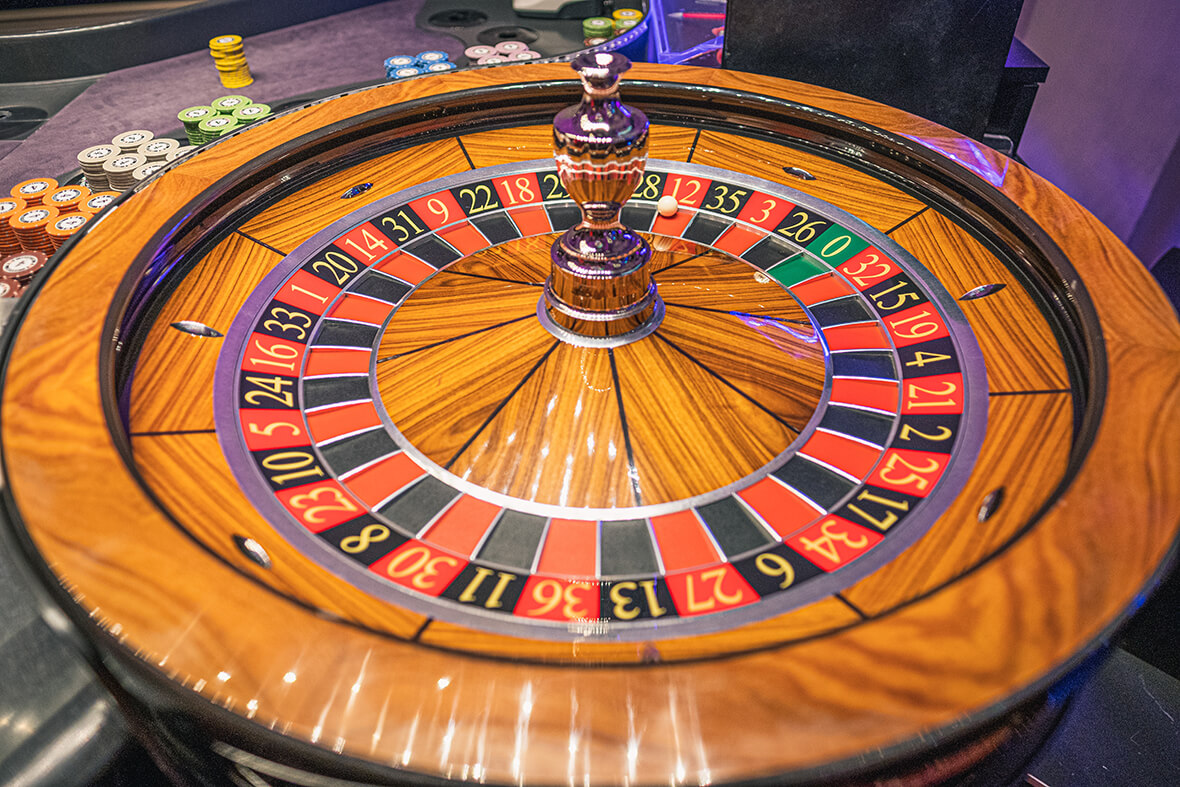Roulette Rules and Strategy

Roulette is one of the most exciting and well-known casino games, offering the thrill of betting on where a ball will land on a spinning wheel. While the outcome is determined by chance, understanding the basic rules and strategies can improve your experience and help you make more informed decisions at the table.

Roulette Rules
Here’s a breakdown of the key rules you should know before playing roulette:
- The Roulette Wheel and Table
- The roulette wheel consists of 37 slots in European/French roulette (1-36 and a single 0) and 38 slots in American roulette (1-36, 0, and 00).
- The numbers on the wheel alternate between red and black, except for the green 0 and 00 (in American roulette).
- The Betting Layout
- Players place bets on the roulette table, which consists of two main areas: inside bets (on specific numbers or small groups) and outside bets (on larger categories like red/black, odd/even, etc.).
- Inside bets generally have higher payouts but are less likely to win, while outside bets offer more frequent wins with lower payouts.
- Types of Bets
- Inside Bets: These are placed on specific numbers or small groups of numbers.
- Straight-up: Betting on a single number (pays 35:1).
- Split: Betting on two adjacent numbers (pays 17:1).
- Street: Betting on a row of three numbers (pays 11:1).
- Corner: Betting on four numbers that form a square (pays 8:1).
- Six Line: Betting on two adjacent rows (pays 5:1).
- Outside Bets: These are placed on larger categories.
- Red or Black: Betting on the color of the number (pays 1:1).
- Odd or Even: Betting on whether the number will be odd or even (pays 1:1).
- High or Low: Betting on whether the number will be between 1-18 (low) or 19-36 (high) (pays 1:1).
- Dozen: Betting on one of three dozen groups (1-12, 13-24, 25-36) (pays 2:1).
- Column: Betting on one of the three vertical columns (pays 2:1).
- Inside Bets: These are placed on specific numbers or small groups of numbers.
- How the Game Works
- After placing bets, the dealer spins the wheel and releases a ball in the opposite direction.
- The ball eventually lands in one of the numbered slots, determining the winning number and color.
- The dealer announces the winning number, and all players who placed a bet on that number or category win based on their bet.
Roulette Strategy
While roulette is a game of chance, there are several strategies players use to manage their bets and increase their chances of success. Here are some popular strategies:
1. The Martingale System
- The Martingale strategy is one of the most popular betting systems for roulette. It involves doubling your bet after each loss. The idea is that after a loss, you’ll eventually win and recover all your previous losses, plus a profit equal to your original bet.
- Example: If you start by betting $1 on red and lose, you then bet $2 on red. If you lose again, you bet $4, and so on. When you eventually win, you’ll recover all previous losses and gain $1.
Note: The Martingale system is risky, especially with a limited bankroll or table limits. If you hit a losing streak, you may not have enough money to keep doubling your bet.
2. The Reverse Martingale (Paroli)
- The Reverse Martingale involves increasing your bet after each win instead of after each loss. This strategy takes advantage of winning streaks, allowing players to maximize their profits when they are on a roll.
- Example: Start by betting $1 on red. If you win, increase your bet to $2. If you win again, bet $4. Once you lose, go back to your original bet.
Note: This strategy can help preserve your bankroll during losing streaks, but it’s important to set limits to avoid big losses when the streak ends.
3. The D’Alembert System
- The D’Alembert strategy is based on increasing your bet by one unit after a loss and decreasing it by one unit after a win. It’s considered a less aggressive system than the Martingale and works well for players who prefer gradual changes to their bets.
- Example: If your base bet is $1, and you lose, you increase your next bet to $2. If you win, decrease your bet back to $1.
4. The Fibonacci System
- The Fibonacci betting system is based on the famous mathematical sequence (1, 1, 2, 3, 5, 8, 13, etc.). You increase your bet by following the Fibonacci sequence after each loss and move back two steps when you win.
- Example: Start with a $1 bet. If you lose, bet $1 again. If you lose again, bet $2. If you win, bet $1 again.
Note: Like the Martingale system, the Fibonacci strategy can lead to higher bets after a series of losses, so it’s important to keep an eye on your bankroll.
5. The Labouchère System
- The Labouchère strategy is a more complex system where you set a target profit and break it down into smaller numbers. The goal is to reach your target by crossing out numbers as you win, but adding new numbers to the list if you lose.
- Example: If your target profit is $10, you might break it down into 1, 2, 3, and 4. After each win or loss, you either cross out numbers or add new ones to continue the sequence.
Note: This strategy can be more flexible but requires careful tracking of your bets and outcomes.
